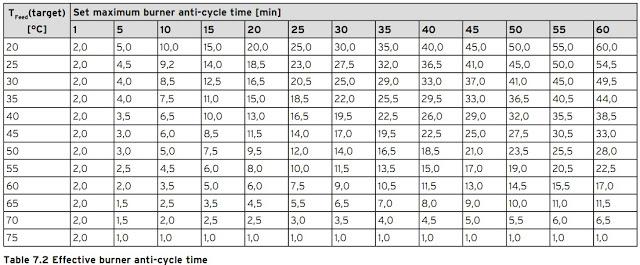We have a Glow Worm Ultracom 24hxi, installed approx 5 years ago.
I recently replaced the standard rotary thermostat in the hall with a centaurstat 7.
The thermostat does everything i expected it to, but seems much more sensitive than the old one.
When the house has got up to temperature the thermostat is very quick to cut in or out. The net effect of this is that whenever the thermostat calls for heat the boiler fires for 2-3 minutes, the thermostat trips and the boiler goes into bypass. During the 5 minutes that the bypass is running the thermostat will call again and the boiler will immediately fire once the water pump overrun time has been reached.
Typically, the boiler will cycle twice before the temperature of the house stabilises for a while.
Is there any way to reduce the sensitivity of the thermostat or adjust the settings of the boiler to prevent this from happening so that the boiler fires for long enough that there is a bit of temperature overshoot to prevent the cycling?
I recently replaced the standard rotary thermostat in the hall with a centaurstat 7.
The thermostat does everything i expected it to, but seems much more sensitive than the old one.
When the house has got up to temperature the thermostat is very quick to cut in or out. The net effect of this is that whenever the thermostat calls for heat the boiler fires for 2-3 minutes, the thermostat trips and the boiler goes into bypass. During the 5 minutes that the bypass is running the thermostat will call again and the boiler will immediately fire once the water pump overrun time has been reached.
Typically, the boiler will cycle twice before the temperature of the house stabilises for a while.
Is there any way to reduce the sensitivity of the thermostat or adjust the settings of the boiler to prevent this from happening so that the boiler fires for long enough that there is a bit of temperature overshoot to prevent the cycling?


